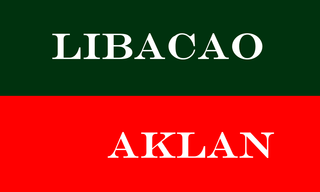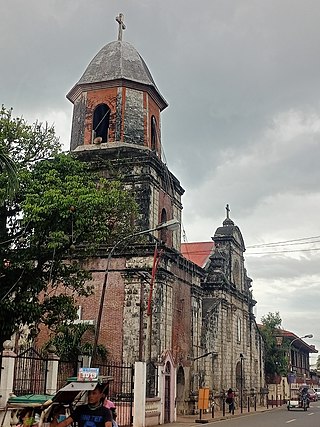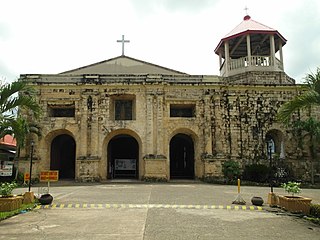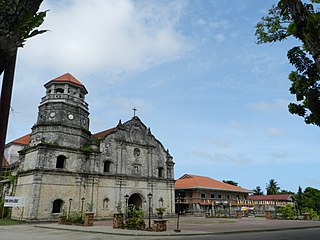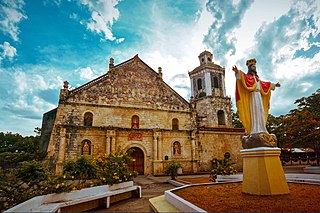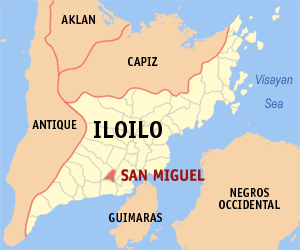Tapaz | |
|---|---|
| Municipality of Tapaz | |
 Tapaz Government Center | |
| Motto: Bakas Tapaz | |
| Anthem: "Tapaz, Banwang Nalulutan" | |
 Map of Capiz with Tapaz highlighted | |
Location within the Philippines | |
| Coordinates: 11°15′44″N122°32′13″E / 11.2622°N 122.5369°E Coordinates: 11°15′44″N122°32′13″E / 11.2622°N 122.5369°E | |
| Country | Philippines |
| Region | Western Visayas |
| Province | Capiz |
| District | 2nd district |
| Barangays | 58 (see Barangays) |
| Government | |
| • Type | Sangguniang Bayan |
| • Mayor | Roberto O. Palomar |
| • Vice Mayor | Romel G. Somo |
| • Representative | Fredenil H. Castro |
| • Municipal Council | Members |
| • Electorate | 36,096 voters (2022) |
| Area | |
| • Total | 517.18 km2 (199.68 sq mi) |
| Elevation | 259 m (850 ft) |
| Highest elevation | 2,069 m (6,788 ft) |
| • Rank | 0 |
| Population | |
| • Total | 54,423 |
| • Density | 110/km2 (270/sq mi) |
| • Households | 13,473 |
| Demonym | Tapaznon |
| Economy | |
| • Income class | 1st municipal income class |
| • Poverty incidence | 12.41 |
| • Revenue | ₱ 264.8 million (2020) |
| • Assets | ₱ 569.7 million (2020) |
| • Expenditure | ₱ 233.3 million (2020) |
| • Liabilities | ₱ 290 million (2020) |
| Service provider | |
| • Electricity | Capiz Electric Cooperative (CAPELCO) |
| Time zone | UTC+8 (PST) |
| ZIP code | 5814 |
| PSGC | |
| IDD : area code | +63 (0)36 |
| Native languages | Sulod Karay-a Capiznon Hiligaynon Tagalog |
| Website | www |
Tapaz, officially the Municipality of Tapaz (Capiznon/Hiligaynon: Banwa sang Tapaz; Aklanon: Banwa it Tapaz; Kinaray-a : Banwa kang Tapaz/Banwa ka Tapaz; Tagalog : Bayan ng Tapaz), is a 1st class municipality in the province of Capiz, Philippines. According to the 2020 census, it has a population of 54,423 people. [3]
Contents
- History
- Geography
- Climate
- Barangays
- Demographics
- Religion
- Economy
- Healthcare
- Education
- High schools
- College
- References
- External links
The festival in Tapaz are the Patabangay Festival in September honoring Patron Saint Jerome, and Sirinadya in January honoring Sr. Santo Niño. Other local festival is Tinuom Festival in San Nicolas celebrated in the Month of December honoring Patron Saint Nicholas of Myra.
The natives of Tapaz are mixture of several ethnic groups as the Malays, Spaniards, Indonesians, and the Aetas or Negritos who are the aborigines of Panay. In the recent years the residents are distincts group as the "Baludnons" those in lowland and "Bukidnons" those in upland.
The town is known for a small community of indigenous Panay-Bukidnon in Barangay Tacayan. The community is home to Feliza, a binukot who has expertise in chanting the suguidanon, one of the most significant epic chants of the Western Visayas region. Feliza is the last known person who can speak the Ligbok language in her community, making her the last bastion for the thousand-year old language in Tapaz. Her death would translate to the death of the language in Tapaz itself and the suguidanon epic chant as well. Also, Feliza has traditional tattoos on her skin which were inscribed when she was chosen as a binukot. In 2016, after reports came out on the dying Ligbok language and suguidanon epic chant, the government began documenting the language and epic chant and teaching the language to younger generations of Panay-Bukidnon in Tapaz. [5]
Marugo lake in San Antonio barangay is most popular tourist destination.









